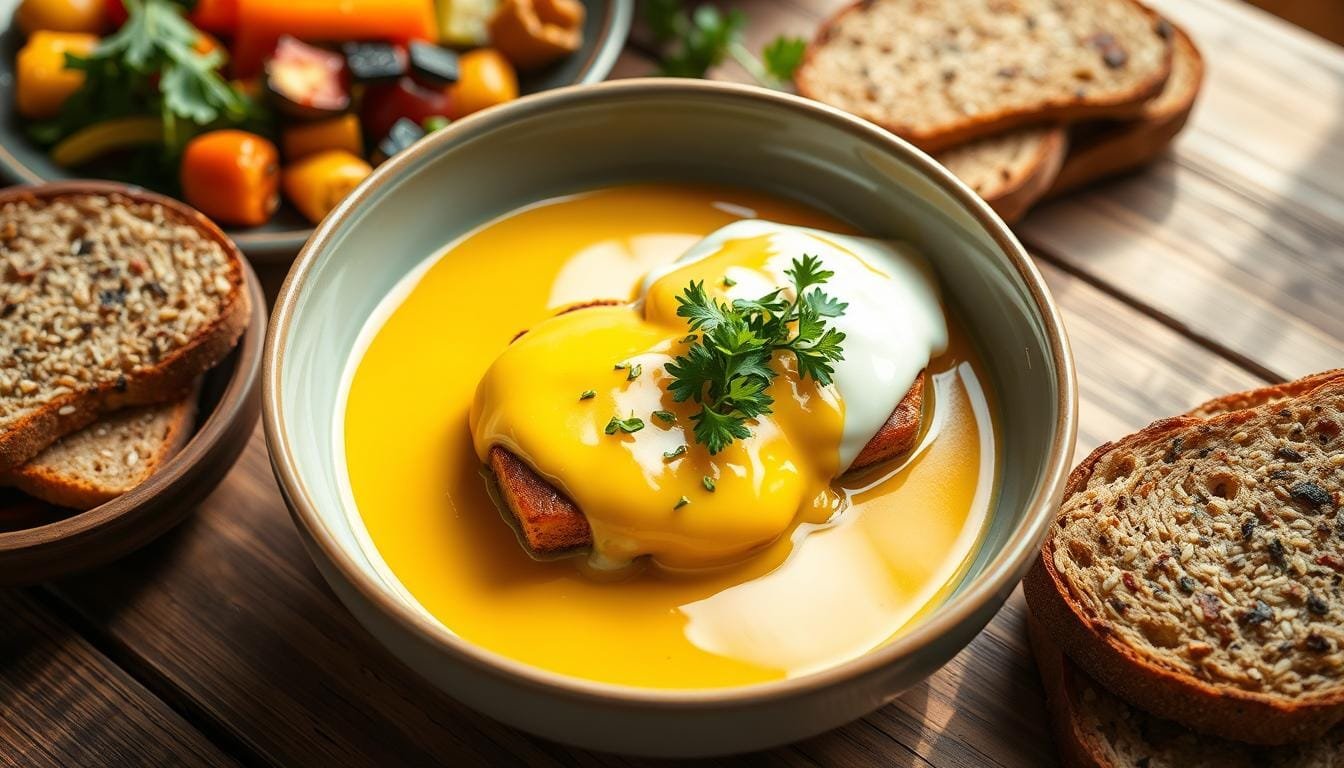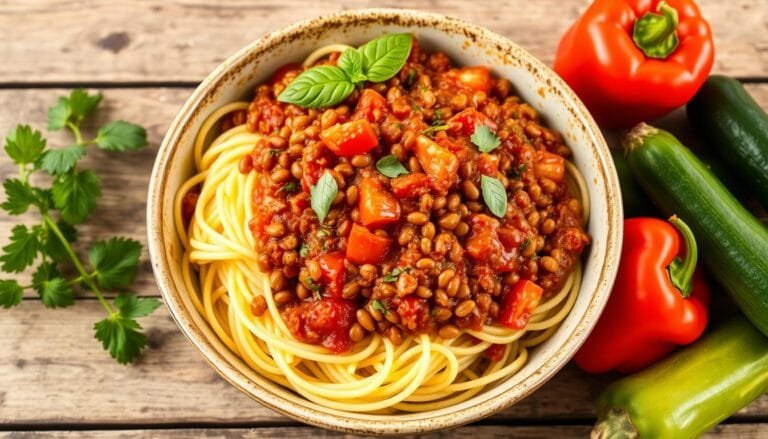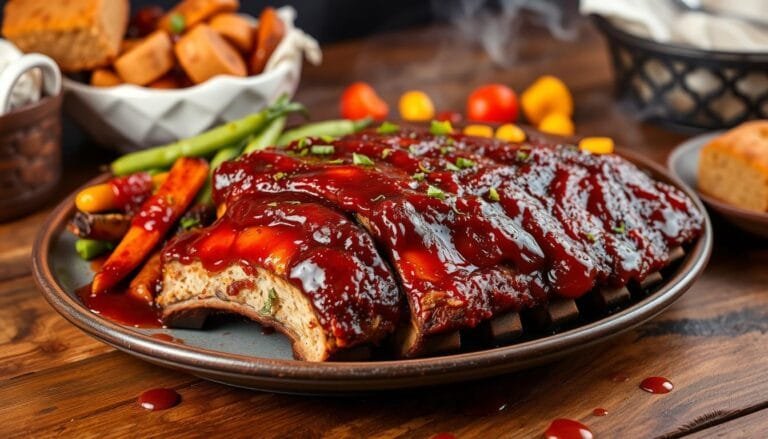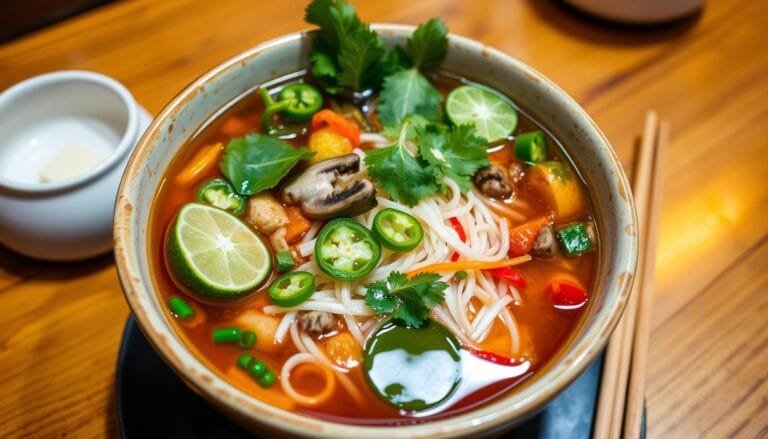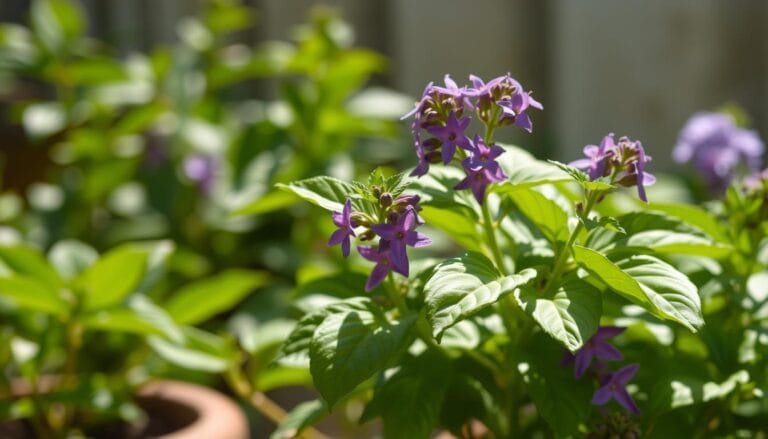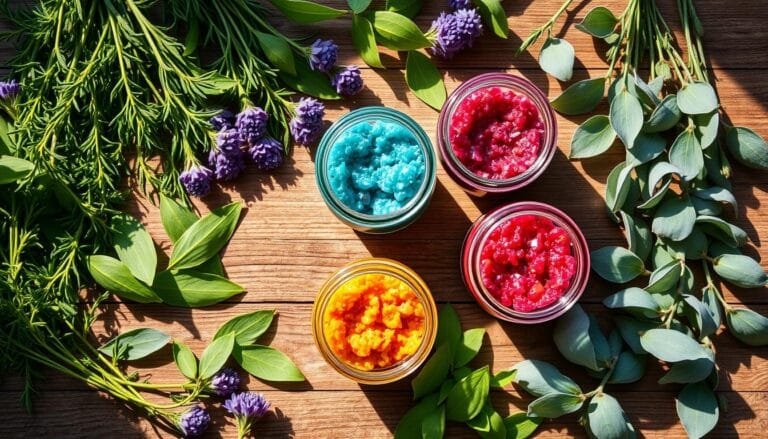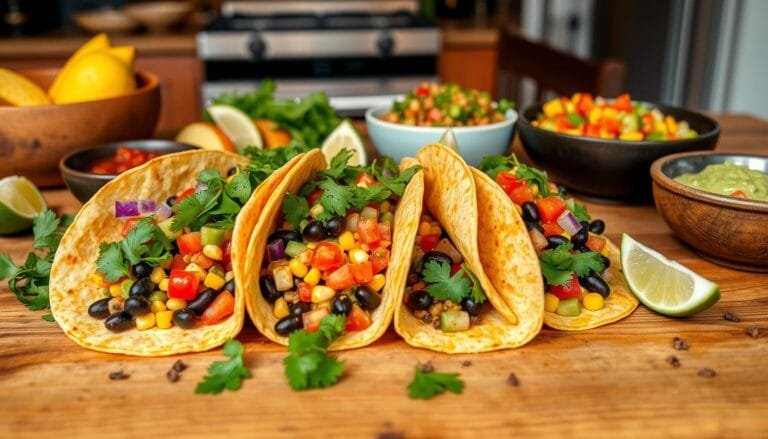I love brunch and always wanted to try Hollandaise sauce. But, the traditional recipe uses eggs and dairy. That changed when I found plant-based Hollandaise sauce. It tastes just like the classic but is healthier.
Hosting brunch or just want a tasty topping? This dairy-free hollandaise is a must-try. It’s made with cashews, tofu, or almonds and is silky smooth. Plus, it’s ready in under 30 minutes, making it a vegan brunch essential.
In this article, I’ll show you how to make your own plant-based Hollandaise sauce. We’ll cover the classic’s origins and how to make a vegan version. Get ready to wow your brunch guests with this egg-free sauce.
Understanding Traditional vs Plant-Based Hollandaise
Hollandaise sauce has a long history, starting in the mid-17th century. It comes from classic French cuisine. The traditional version mixes egg yolks, butter, and lemon juice for a creamy sauce.
This sauce is loved with poached eggs, asparagus, and salmon. It’s a favorite in many dishes.
Origins of Classic Hollandaise
The sauce’s roots go back to the 18th century. It was named after Holland because of Dutch butter. Over time, it became a key part of French cooking.
Its mix of flavors and smooth texture has won hearts around the world.
Why Create a Vegan Alternative
Traditional hollandaise is tasty, but it’s not for everyone. It uses egg yolks and butter, which some can’t eat. So, a vegan version was made.
This new sauce lets more people enjoy hollandaise without dietary worries.
Health Benefits of Plant-Based Version
The vegan hollandaise is healthier than the traditional one. It uses silken tofu, soy milk, and sunflower oil. This makes it lower in calories and free from cholesterol.
It also avoids the risk of raw egg yolks, making it safer for everyone.
“The vegan hollandaise sauce keeps the same pale yellow color, mouthfeel, and flavor profile as the traditional sauce, making it a seamless replacement.”
Essential Ingredients for Perfect Plant-based Hollandaise Sauce
Making a tasty vegan hollandaise sauce starts with picking the right ingredients. You need a creamy base, tangy lemon juice, savory seasonings, and a bit of color.
For the base, you can pick from cashews, soft tofu, or almonds. These give a thick, creamy texture like traditional hollandaise. Plant-based milk and nutritional yeast add creaminess and a cheesy taste.
Lemon juice is key for its tangy flavor. Mustard, whether Dijon or whole-grain, adds depth. Salt, pepper, and a bit of turmeric or paprika help balance the flavors.
Some recipes use coconut oil or olive oil for richness. Soy sauce or kala namak give an “eggy” taste, making it more like the real thing.
By choosing the right vegan hollandaise ingredients, you make a dairy-free sauce base that’s tasty, looks good, and is healthy. A bit of trial and error will help you make the perfect plant-based hollandaise sauce for your vegan brunch.
“The key to a fantastic vegan hollandaise is finding the right balance of creamy, tangy, and savory flavors. It’s all about quality ingredients and a little bit of experimentation.”
Kitchen Tools and Equipment Needed
To make a creamy vegan hollandaise sauce, you need the right tools. A smooth texture comes from blending well. So, having the right blender or processor is key.
Blender Options for Smooth Results
A high-speed blender like a Vitamix or Blendtec is best for vegan hollandaise. These blenders blend ingredients into a smooth sauce easily. An immersion blender can also work, blending right in the saucepan.
Additional Kitchen Tools
- Small saucepan: Needed for gently heating the sauce and maintaining the right temperature.
- Measuring cups and spoons: Crucial for accurately portioning the ingredients.
- Fine-mesh strainer (optional): Can be used to strain the sauce for an extra-smooth consistency.
- Whisk (optional): Helpful for adjusting the thickness and consistency of the sauce.
- Sauce boat or small pitcher: Practical for easy pouring and serving of the vegan hollandaise.
With the right vegan sauce equipment, blender, and kitchen tools, you can make a top-notch vegan hollandaise sauce at home.
Step-by-Step Blending Technique for Silky Sauce
Making a smooth, vegan hollandaise preparation is simpler than you might think. The secret is in the blending technique. Follow these easy steps to get a silky dairy-free hollandaise every time:
- If using raw cashews or almonds, soak them in hot water for 15 minutes to soften. Drain and rinse thoroughly.
- In a high-speed blender, mix all your sauce ingredients – the soaked nuts (if using), lemon juice, plant-based milk, Dijon mustard, and seasonings.
- Blend the mix on high speed for 1-2 minutes, stopping to scrape down the sides as needed, until it’s smooth and creamy.
- For an extra silky texture, blend the cashew-based sauce for an extra minute or two. This breaks down the nuts fully.
- Adjust the sauce’s consistency by adding a splash more plant milk if it’s too thick. Taste and season with salt and pepper as needed.
- Gently warm the sauce over low heat, stirring often, until it’s at your preferred serving temperature.
The secret to a perfect vegan hollandaise sauce is blending it until it’s as smooth as the traditional version. With just a few simple ingredients and this easy technique, you can enjoy a deliciously dairy-free hollandaise anytime.
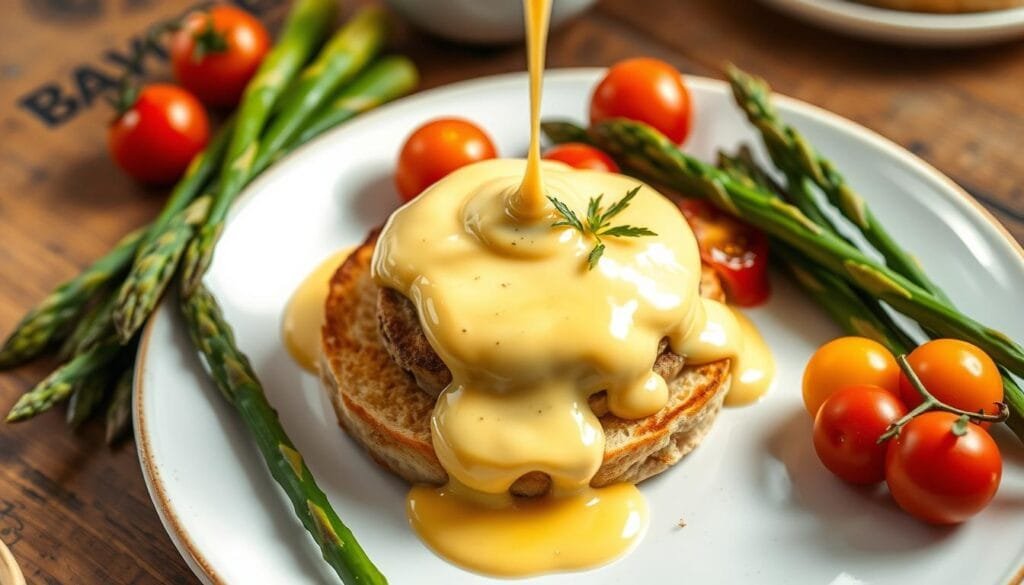
“This blender hollandaise sauce is so quick, foolproof, and delicious – you’ll never go back to the classic version!”
Achieving the Perfect Consistency and Color
Creating a vegan hollandaise texture that’s just like the real thing is all about finding the right mix. Adjust the plant-based milk to get the dairy-free sauce consistency you want. For a thicker sauce, use less liquid or add more cashews or tofu. If it’s too thick, add a bit of water or more plant milk.
To get the right plant-based sauce color, a little turmeric can help. Start with a small amount and add more until you get the color you like. Turmeric not only changes the color but also has health benefits like fighting inflammation and detoxifying.
Troubleshooting Common Texture Issues
If your vegan hollandaise sauce feels grainy, don’t panic. This problem is easy to fix. Just blend the ingredients longer or strain the sauce through a fine-mesh sieve to get rid of the grainy bits.
Temperature Control Techniques
Keeping the right temperature is key for a perfect vegan hollandaise texture. Heat the sauce gently over low heat, stirring constantly. This prevents it from separating. Don’t let it boil, as it can ruin the texture and taste of your sauce.
“The secret to a silky, dairy-free hollandaise is finding the right mix of ingredients and controlling the temperature. With a bit of practice, you’ll make a smooth, creamy sauce every time.”
Flavor Enhancers and Seasoning Tips
Making the perfect plant-based Hollandaise sauce is an art. The key to success is using flavor enhancers and seasonings wisely. As a vegan food lover, I’ve found that a few simple additions can turn a basic sauce into a masterpiece.
To get that “eggy” taste, a pinch of kala namak (black salt) is magic. It adds a subtle sulfurous note that tastes like hard-boiled eggs. This makes your vegan hollandaise flavoring taste just right.
Adding a tablespoon or two of nutritional yeast brings a savory “cheesiness.” It’s creamy, umami-rich, and packed with nutrients. You get vitamins, minerals, protein, and fiber.
- Nutritional yeast has about 8-10 grams of protein per serving.
- It has 4-5 grams of fiber per serving.
- Thiamin (B1) in nutritional yeast gives 640% of the Daily Value.
- Riboflavin (B2) in nutritional yeast is 570% of the Daily Value.
- Niacin (B3) in nutritional yeast is 280% of the Daily Value.
- Vitamin B6 in nutritional yeast offers 480% of the Daily Value.
- Folate content in nutritional yeast provides 60% of the Daily Value.
- Fortified varieties of nutritional yeast offer up to 730% of the Daily Value of vitamin B12 per serving.
To balance the richness, a squeeze of fresh lemon juice adds tanginess. A dash of Dijon mustard adds depth. A sprinkle of garlic or onion powder can also enhance the flavor.
The secret to the perfect dairy-free sauce taste is experimenting and tasting. Don’t be shy to try different seasonings until you find the perfect mix that excites your taste buds.

Creative Ways to Serve Your Vegan Hollandaise
Discover the many ways to use your homemade plant-based hollandaise sauce. It’s perfect for a variety of brunch dishes. From vegan eggs Benedict to new veggie pairings, it makes any dish special.
Classic Benedicts Reimagined
Try a new twist on eggs Benedict with tofu “eggs” on English muffins. Add plant-based ham or avocado for extra flavor. Top it all with your dairy-free hollandaise for a delicious breakfast.
Vegetable Pairing Suggestions
- Steamed asparagus spears
- Roasted Brussels sprouts
- Grilled artichoke hearts
Your plant-based hollandaise goes great with many veggies. It turns simple sides into a tasty brunch.
Brunch Presentation Ideas
Make your brunch look amazing by serving the dairy-free sauce in a small pitcher. Let guests add it themselves. Add paprika, fresh herbs, or microgreens for a nice touch.
Your homemade plant-based hollandaise adds a special touch to brunch. It’s creamy and versatile. Get creative and enjoy making your brunch stand out.
Storage and Reheating Guidelines
Keeping your homemade vegan hollandaise sauce fresh is key. Follow these easy steps to enjoy your dairy-free sauce at its best.
Refrigerating Your Leftovers
Put leftover vegan hollandaise sauce in an airtight container in the fridge for up to 5 days. It might thicken in the fridge. So, add a little water or plant-based milk when you reheat it.
Reheating the Sauce
- Warm the plant-based sauce on the stovetop over low heat. Stir constantly to keep it smooth.
- Don’t microwave the sauce. It can get lumpy and lose its creamy texture.
- If it separates while reheating, just blend it again until it’s smooth.
For the best taste, make your vegan hollandaise fresh. But with these tips, you can also enjoy your leftovers.
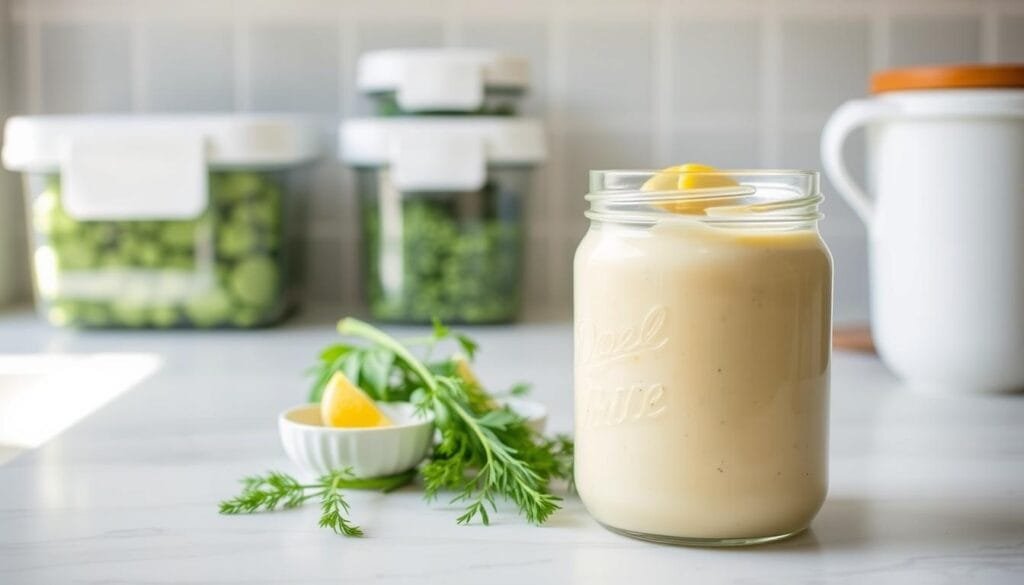
Common Mistakes to Avoid When Making Plant-Based Hollandaise
Making vegan hollandaise sauce can be tricky, but avoiding a few common mistakes can help. You’ll get a smooth, tangy, and flavorful sauce every time. As you start your plant-based brunch, remember these vegan hollandaise tips to avoid plant-based sauce errors and dairy-free sauce troubleshooting.
- Don’t overheat the sauce. It can separate or curdle. Warm the ingredients gently instead.
- Blend slowly. Make sure all ingredients mix well for a creamy texture.
- Watch the salt. Too much can make the sauce too salty. Start with a little and taste as you go.
- Coconut milk can add a strong coconut flavor. Use it with caution.
- Lemon juice is key for the sauce’s tangy taste. Don’t skip it.
- When reheating, do it slowly and gently. Rushing can cause the sauce to break down.
- Stay away from oil-based vegan butters. They can make the sauce too oily.
Follow these vegan hollandaise tips and fix any plant-based sauce errors or dairy-free sauce issues. You’ll soon master the art of plant-based hollandaise sauce. Enjoy your delicious, guilt-free brunch!
“With a little patience and the right techniques, you can create a vegan hollandaise sauce that’s every bit as rich, creamy, and flavorful as the traditional version.”
Recipe Variations and Adaptations
I enjoy trying new things with my plant-based Hollandaise sauce. There are many ways to make this dairy-free sauce your own. You can change it to fit your taste and dietary needs.
For those with nut allergies, try using silken tofu or white beans instead of cashews. They give a creamy texture without nuts. Add some chipotle peppers or sriracha for a spicy flavor. You can also add fresh basil, tarragon, or dill for a herbal twist.
Want a lighter sauce? Use zucchini or cauliflower as a base. They add a mild flavor and keep the sauce thick and smooth. A tablespoon of miso paste can boost the umami flavor. For a cheesy taste, add more nutritional yeast and a bit of apple cider vinegar.
